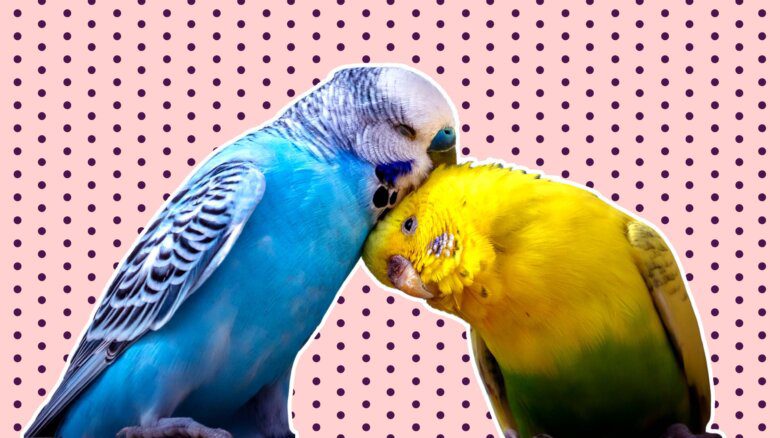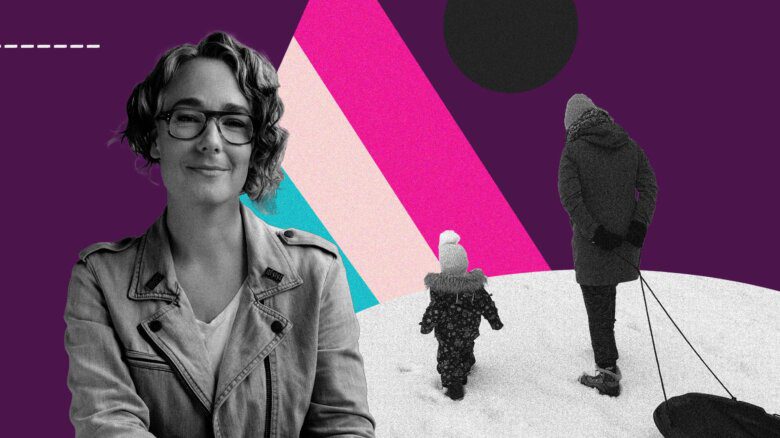Angie Byron, award-winning Drupal coder, first woman on the cover of Linux Journal, guru to 18,000 Twitter followers, had to come out of the closet twice.
The first time she came out as a lesbian. The usual, she says — she got caught trying to look up another girl’s skirt when she was five years old. Living in small town Minnesota in the 1990s, she kept it quiet.
At 20 she fell in love with a woman she met in an online forum for queer punk rockers. For their first date, Byron flew to Nova Scotia. For their second, she packed up a U-Haul, drove to Canada, and moved in — nobody could accuse her of not being lesbian enough. They stayed together for 17 years.
In some ways it worked; she loved the parts where she could bring her wife flowers or stare into her eyes. They kissed and cuddled and held hands. They were best friends. Sex, however, was a sticking point.
For nearly two decades, Byron struggled to match her wife’s libido. She found she couldn’t. She waited for her “sexual peak” in her 30s. It didn’t come. She tried to fake it until she made it. She didn’t make it.
A few months after their divorce, wandering through confusion and existential doubt, she Googled the word “asexuality,” and her self-understanding came crashing suddenly into place.
“It’s not like I wasn’t into her,” Byron tells me. “It just wasn’t there. But I didn’t have the vocabulary. It really screws you up, actually.”
For the first 37 years of her life, Byron had a sexual orientation: she was a lesbian. Then last year, she came out again, as a homo-romantic asexual (or “a lesbionic ace” as she prefers).
She likes women, that’s for sure, but more in the candlelit dinners way and less in the tearing-each-other’s-clothes-off way. And yes, she says, she’s still a lesbian.
I called Byron to ask her if she still has a sexual orientation. Yes, she says, she thinks she does. Nobody had to tell her she liked girls; she just knew. And in the same way, she just knew she didn’t want sex.
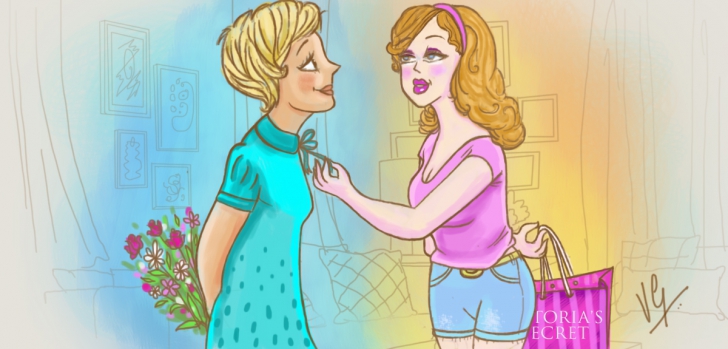
In the past year, the asexual community has pushed to be recognized as a sexual orientation, alongside gay, lesbian and bisexual people.
Two dozen researchers from around the world signed an open letter to the UK Office of National Statistics, asking that asexuality be included as a sexual identity option in the 2021 census.
A census question would give visibility and legitimacy, they say, to a sexual minority that has been largely ignored, despite making up — by the best estimates — more than one percent of people, or half a million UK citizens.
Two of those academics, psychologists Lori Brotto and Morag Yule of the University of British Columbia, published a paper this summer in the Archives of Sexual Behaviour reviewing the evidence on asexuality and arguing that it should indeed be classified as a sexual orientation.
Much of the push to classify asexuality as a sexual orientation is to clarify what asexuality is not. Nearly every open “ace” (the common community term for asexual) has stories about being told they probably have hormone problems, must have suffered from psychological trauma, are sexual repressed, or just haven’t tried the right penis yet.
This, Byron says, is the argument that you don’t know if you like having sex with llamas until you’ve tried, and asexuals hear it incessantly.
In their paper, Brotto and Yule systematically cross off a list of what asexuality is not.
If it walks like a sexual orientation and it quacks like a sexual orientation, it’s probably a sexual orientation.
Is it a mental disorder? Asexuals tend not to be distressed or troubled by their asexuality, the authors say, and don’t have levels of mental illness that can’t be explained by social pressure. While asexuals do seem to have higher rates of autism spectrum conditions, there is no clear link, and people on the autism spectrum are themselves fighting to remove the label of mental illness.
Is asexuality a sexual dysfunction? Studies in asexual women have shown they seem to have no difference in sexual arousal function from sexual women, they just don’t want to have sex. Unlike people suffering from hypoactive sexual desire disorder, asexuals also don’t experience distress, unless (like Byron) they don’t yet know they are asexual.
In many cases, sexual dysfunction is temporary and can be tied to trauma or other psychological problems, whereas asexuality is often lifelong and immutable.
What about a paraphilia — an abnormal sexual desire? Could asexuals have a sort of fetish for nothing, or sexual focus on something so abstract it doesn’t register as a sexual target? Possible, the authors say, but there is no evidence that asexuals share any particular sexual fixation.
No, Brotto and Yule say, whatever is going on with asexuals, it seems much more like what is going on with straight, gay and bisexual people.
Like gay people, asexuals have biomarkers of developmental influences in the womb, such as a higher number of older brothers, and being more likely to be left handed. Like sexual orientation, asexuality tends to be stable over long periods of time, often the entire lifetime. As with other sexual orientations, asexuals consistently seek out the kind of sex they want — in their case, none at all.
In other words, Yule and Brotto are saying, if it walks like a sexual orientation and it quacks like a sexual orientation, it’s probably a sexual orientation.
While that’s enough to argue that asexuality isn’t an illness and doesn’t need to be cured, it raises some thorny definitional problems. After all, sexual orientation is usually defined as a sort of internal mechanism that tells us whom to have sex with. If asexuals don’t want to have sex, do they have a sexual orientation at all?
“I don’t know,” Brotto answers, immediately. “It depends how literally you take that definition. If you take orientation to be a compass that can point in any of a multitude of directions, and depending on where it lands that’s how we classify one’s orientation, then in that sense, the possibility of it landing nowhere doesn’t take away from the idea that it’s a compass that’s spinning.”
Part of the problem, she says, is that even among sex researchers, there’s no agreed upon definition of what a sexual orientation is.
I think the important question is, what are the political ramifications of having an orientation?
If scientists still don’t agree on where orientations come from, how they work, why they change or whether they are even meaningful categories, it’s difficult to come up with any objective measure.
“I think there’s more evidence that it is an orientation than that it isn’t,” Brotto says. “There is a lot more work we need to do on these questions.”
“I think the important question is, what are the political ramifications of having an orientation?” says Justine Munich, a romantic asexual Canadian nuclear physicist conducting research at CERN in Switzerland.
She points out that in many human rights codes, including Canada’s, sexual orientation is a prohibited ground for discrimination. To be protected in the same way, asexuals have to fit in.
But while asexuals often present a united face to the world, Munich says, there’s plenty of internal debate. Some asexuals think of themselves as queer; some don’t. Some, especially those in romantic relationships, want to spread the message that asexuals can have sex for the sake of a partner; others who are viscerally repulsed by sex want people to understand that asexuals don’t want sex at all.
“Things are always more complicated than we think they should be,” Munich says.
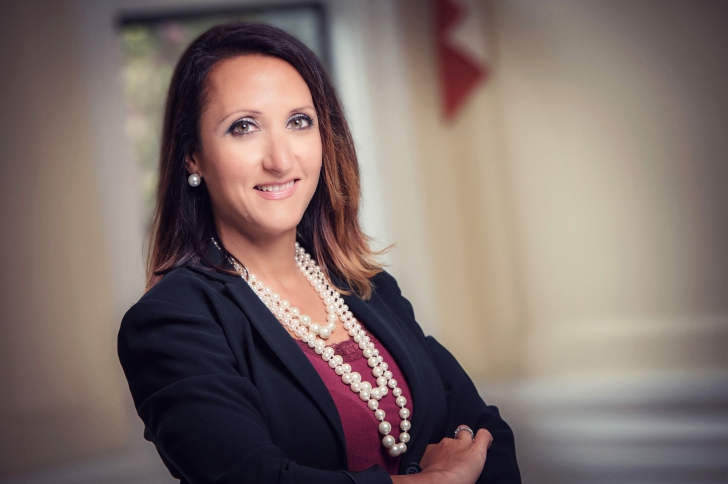
Among researchers, there are nearly as many opinions.
One possibility for understanding asexuality, proposed by veteran asexuality researcher Anthony Bogaert at Brock University, is that asexuals have a sexual drive but without focus, an identity-less sexuality that he calls “autochorissexualism.”
Brotto and Yule’s research shows the majority of asexuals masturbate at least occasionally, and many of them even have sexual fantasies that involve fictional characters, or non-sexual scenes. Asexuality, at least in many cases, could be like Brotto’s compass: pointing, but not in any particular direction.
I have a perfectly clear sexual orientation, which is no sexual attraction to anyone at all.
Another possible way of understanding asexuality comes out of the work of University of Kansas psychologist Michael Storms, who in 1979 proposed that sexual orientation was not only a matter of direction but also a matter of degree, and sexuality should be placed on a two-dimensional field instead of the one-dimensional Kinsey scale.
Since then, many asexuals have embraced the continuum theory of asexuality, creating words like “Grey-As” (who are mostly asexual), “Demisexuals” (who are only sexual in the context of emotional relationships), and “romantic asexuals” (who, like Byron, experience romance but not sexual attraction).
If the Storms model holds up, asexuality is not so much a kind of sexual orientation as a way of measuring its intensity.
Michael Doré, an asexual activist with the Asexuality Visibility and Education Network, says he thinks sexual orientation is still the best way to understand asexuality.
“To me, an orientation is the people you’re sexually attracted to,” he says. “I have a perfectly clear sexual orientation, which is no sexual attraction to anyone at all.”
The most important message to get across, he says, is that like being gay, asexuality is not a choice.
What draws asexuals together, Doré says, is the experience of having to opt-out of a system that everyone tells you should be important. Asexuals may not meet up for sexual connection like gays and lesbians, but they communally face many of the same challenges of exclusion, discrimination and psychological pressure.
“For me, it was the revelation that I wasn’t a freak,” Bryon says. Discovering the asexual world online, for her, was very much like discovering she wasn’t the only lesbian.
For Doré and Byron, the point of recognizing asexuality as a sexual orientation is to convince people to treat it like one. If people see asexuality as a normal, fundamental, unchangeable form of human sexuality like being gay, straight or bisexual, it could save some people years of struggling to be something they’re not.
But whether asexuality is really a sexual orientation, the extreme end of a spectrum of sexual desire, or a cluster of barely-related phenomena huddled awkwardly under one roof, is a question at which we have barely started to chip away. At the University of British Columbia, Brotto says she’s working on it.
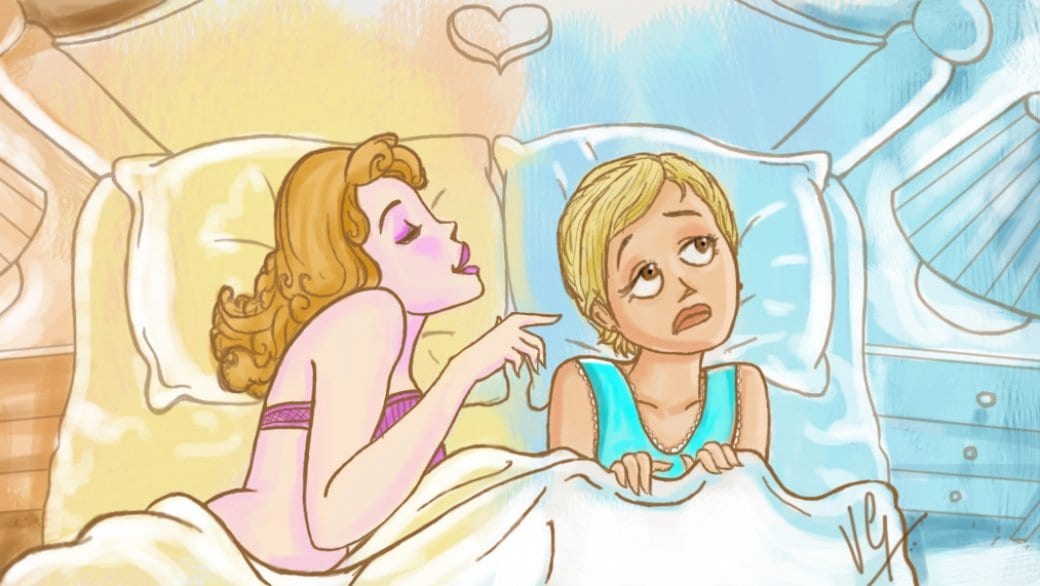
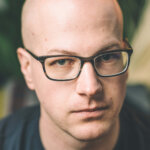
 Why you can trust Xtra
Why you can trust Xtra